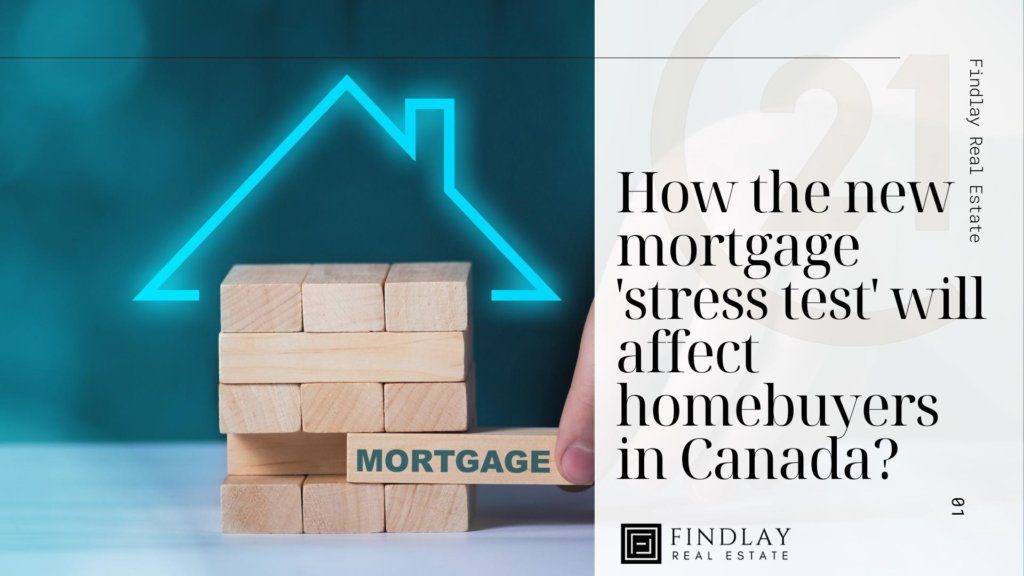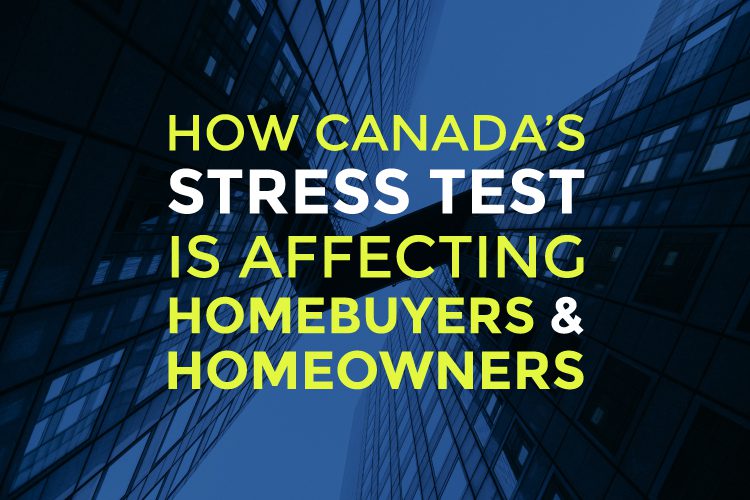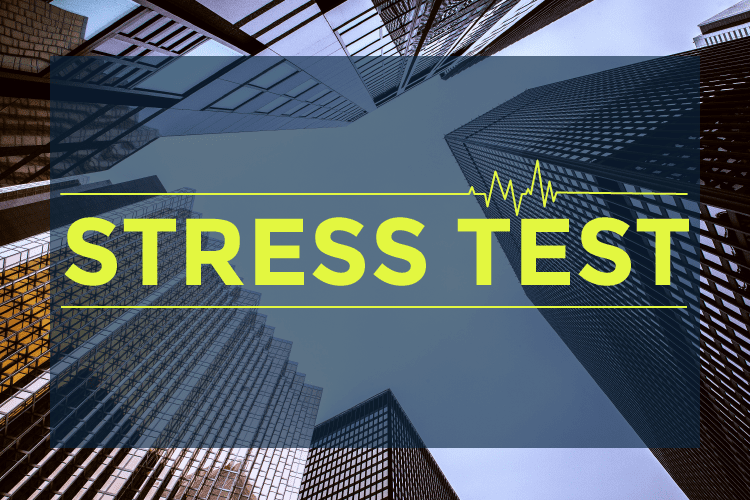How the new mortgage ‘stress test’ will affect homebuyers in Canada?

Overview: a look at the new mortgage stress test and its impact on Toronto’s housing market, including home sales, prices, mortgages, buying power and more.
How the new mortgage ‘stress test’ will affect homebuyers?
TORONTO, ON — In an attempt to try and cool down the overheated housing market, the Canadian federal government is updating its stress test and making it tougher starting June 1, 2021.

The goal?
To cool down the country’s red-hot real estate market and make it harder to buy a home.
Just what does the new stress test entail? What does it mean?
And how will those changes impact home prices, mortgages and your ability to buy real estate?
Let’s find out…
What Is The Mortgage Stress Test?

The original stress test was created back in 2018 by the Office of the Superintendent of Financial Institutions (OFSI).
Its purpose was simple: to make sure homebuyers were spending within their means.
The stress-test helps to determine if borrowers will be able to afford their mortgages even if rates rise.
When someone applies for a mortgage, they’re given a “contracted interest rate.”
This is the “real rate” of their monthly mortgage payments (i.e. what they’ll actually pay).
However, the stress test requires buyers to qualify at a higher “theoretical rate.”
Why?
To make sure they can still afford their monthly payments should interest rates suddenly go up.
For homes that require a down payment of 20% or more, this rate is based on the Bank of Canada’s 5-year benchmark rate plus 2% (whichever is higher).
For homes that require a down payment of less than 20%, this rate is based on the higher of the BoC’s 5-year benchmark rate.
Now that we know what the stress test is and why it was created, let’s examine the proposed changes.
The New Mortgage Stress Test
It will set the qualifying rate on uninsured mortgages at either 2% above the contract rate or 5.25%, whichever is higher.
That’s up from the current qualifying rate of 4.79%.
But the rules also apply to insured mortgages and anyone looking to refinance their home.
According to Global News:
The federal government will align with OSFI by establishing a new minimum qualifying rate for insured mortgages…which will be the greater of the borrower’s mortgage contract rate plus 2 per cent, or 5.25 per cent.
The reason behind the harsher stress test is the same as before: to cool an over-heated housing market.
CTV News informs:
The change is aimed at taking the heat off real estate markets like Toronto and Vancouver, where bidding wars, soaring prices and a flurry of sales were the norm during the COVID-19 pandemic.
So how exactly will the new stress test affect homebuyers?
The new mortgage stress test was announced by the Canada Office of the Superintendent of Financial Institutions on May 20, 2021. The new calculation of the minimum qualifying rate for uninsured mortgages will be set at either the mortgage contract rate plus two per cent or 5.25 per cent — whichever one is greater.

Impacts Of The New Mortgage Stress Test
According to RateHub: In the near term, this change will make it more difficult for homebuyers to qualify for a mortgage. At all income levels, this change reduces the amount of mortgage a household can qualify for…
So the new stress test will make it harder to qualify for a mortgage, as well as the amount people can qualify for.
The new rules will be especially hard on first-time homebuyers.
Global News reports:
…first-time homebuyers in particular are likely going to be impacted the most from the new rules because they’re likely to not have as much equity as those who’ve already purchased a home…
The updated stress test will also lower a buyer’s purchasing power.
The higher minimum stress test is expected to cut maximum buying power by between 4% and 4.5%. For a median-income household, that would reduce the maximum purchase price from $442,000 to $422,000…
On the other hand, the effects won’t be as dramatic as back in 2018, which lowered the purchasing power of households by 22%!
In fact, there’s actually an upside to having less purchasing power.
As Rates.ca explains:
Obviously, [the stress test] cuts buying power, but that also means fewer people will be able to bid as much for homes, reducing some price pressure.
Because of the stress test, serious buyers will face less competition and lower home prices!

Here’s what it means for Canadian home buyers.
According to lowestrates.ca, the current lowest five-year fixed mortgage is 1.69 per cent as of Tuesday afternoon. The average price of a home in Canada is $716,828 as of April 2021, according to the Canadian Real Estate Association.
For Example, Let’s say a home buyer hopes to get qualified for a mortgage with a rate of 1.69 per cent in order to buy a $716,828 home. After a 20 per cent down payment, they would need a mortgage of $573,462. With an amortization period of 25 years, their monthly payment would be $2,343.41, according to the federal government’s mortgage calculator.
But given that 1.69 plus two per cent is less than 5.25, the borrower would be stress tested against a 5.25 per cent interest rate. At 5.25 per cent, the borrower’s monthly payments would be $3,417.36. The borrower would need to prove that they had enough income to afford the $3,417.36 payments, even though they would actually be paying $2,343.41.
Prior to June 1, this borrower would have been tested against the Bank of Canada’s five-year average conventional mortgage rate, which was 4.79 per cent as of last Wednesday. They would have only needed to prove that they could afford payments of $3,267.06 instead of $3,417.36. The pre-June 1 stress test was introduced in 2017 as part of the government’s previous attempts to cool demand in the housing market.
While interest rates are currently at record lows as a result of the pandemic, they’re not guaranteed to stay that way over the long term. In addition to cooling demand, the feds hope that this additional stress test will protect buyers who may struggle to make their mortgage payments if interest rates increase in the future.
But Realtor Sean Findlay who is a sales representative for Century 21 in Toronto & Hamilton, says these new rules could end up hurting first-time homebuyers, many of whom will likely have to get their parents to cosign their mortgages.
“It’s definitely going to make first-time homebuyers have to rethink the budget and what they were spending in the home,” Sean told 6ix Buzz Channel on Tuesday. “I think what we might see a lot more of right now is parents being asked to cosign on properties so that their kids can actually get the property in the first place.”
Sean doesn’t believe a tougher stress test to protect buyers was necessary, especially given the low mortgage delinquency rate in Canada, which is at 0.25 per cent nationally, according to the Canada Mortgage and Housing Corporation.
Canada Mortgage and Housing Corporation.

“Why stress test people at 5.25 per cent? Because that’s the rate they won’t even be paying for five, 10, 15 years,” she said. “You know, when’s the last time people actually had to pay a rate of 5.25 per cent for their mortgage?”
These new rules had currently only applied to uninsured mortgages. The Department of Finance says has recently updated the same rules to now apply clients with insured mortgages.
“It is vitally important that homeownership remain within reach for Canadians. We know that we need to take energetic action on housing supply and affordability in Canada,” finance minister Chrystia Freeland said in a statement last May.
Mortgage Stress Test Summary:
What is the new stress test for mortgages?
The new stress test was announced by the Office of the Superintendent of Financial Institutions on May 20. Starting Tuesday, the new calculation of the minimum qualifying rate for uninsured mortgages will be set at either the mortgage contract rate plus two per cent or 5.25 per cent — whichever one is greater
What is the qualifying rate for a mortgage in Canada?
How is the mortgage stress test rate is calculated? For uninsured home buyers (anyone who qualifies with a down payment of 20% or more) the minimum qualifying rate is based on either the Bank of Canada’s five-year benchmark rate (5.14% at the time of writing) or the rate offered by your lender plus 2% – whichever is higher.
What are the new mortgage rules in Canada?
The new CMHC rules will lower the amount of debt that borrowers with a default insured mortgage can carry. Mortgage applicants will be limited to spending a maximum of 35% of their gross income on housing and can only borrow up to 42% of their gross income once other loans are included.

Pingback:Housing Market Trends in 2021 | Canadian Real Estate News